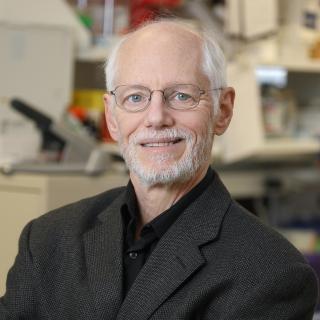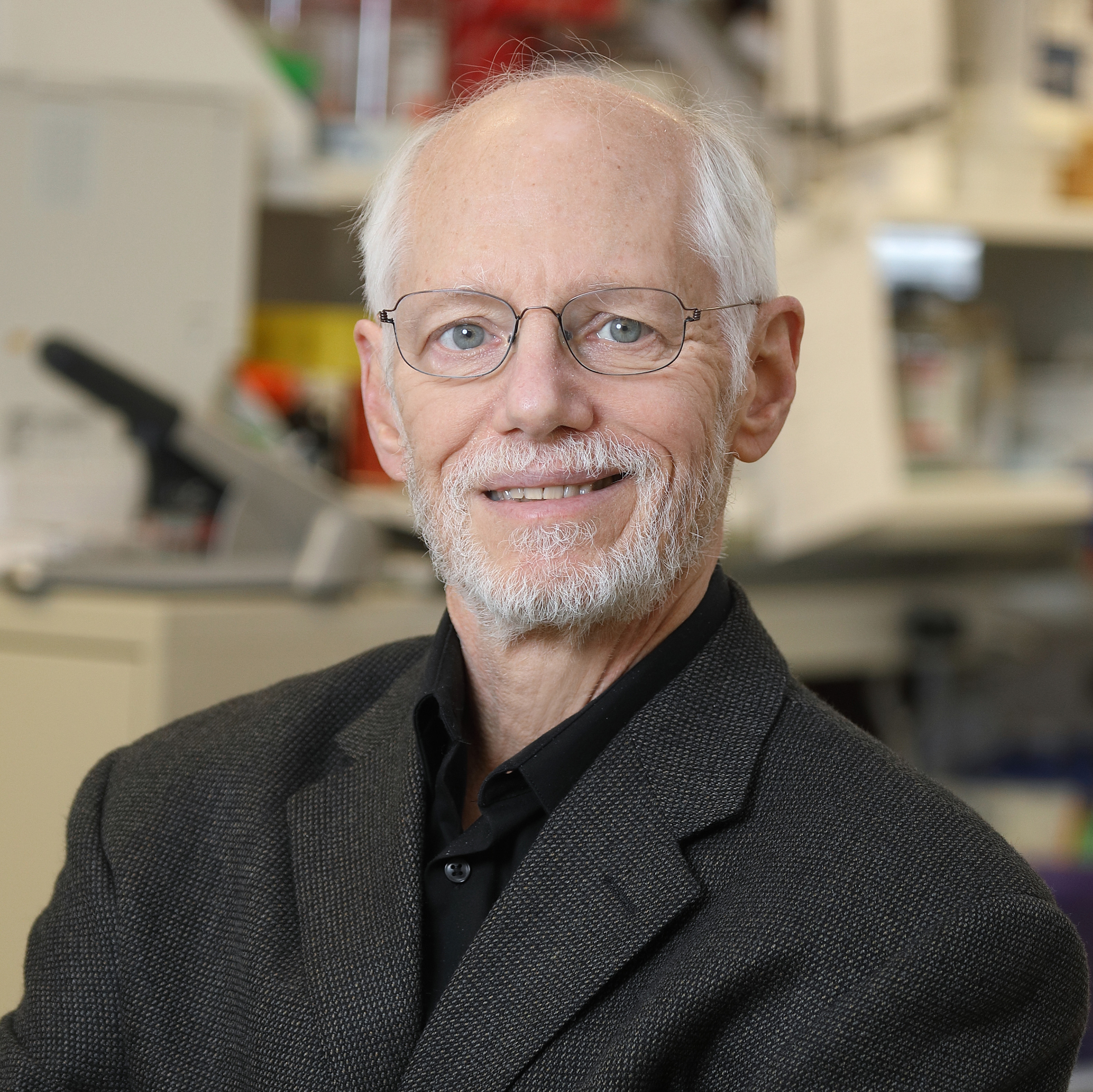
Allan M. Weissman, M.D.
- Center for Cancer Research
- National Cancer Institute
RESEARCH SUMMARY
Allan Weissman is internationally recognized for pioneering work on the ubiquitin-proteasome system (UPS) and its roles in physiology and dysregulation in cancer and other diseases. The discovery by the Weissman lab of activation-dependent T cell antigen receptor ubiquitination made it one of the earliest characterized endogenous substrates for this covalent modification. Subsequently, Weissman and colleagues established RING finger proteins as the predominant family of ubiquitin ligases (E3s). This was followed by a string of other discoveries, some made in collaboration with CCR and extramural colleagues.
Areas of Expertise
Research
The UPS comprises a highly complex, finely tuned, set of mechanisms that determines the fate and function of proteins, and which regulates essentially all cellular processes. The most well-known function of ubiquitin is to target proteins to the 26S proteasome for degradation. Ubiquitination has numerous other roles including in the trafficking of proteins to lysosomes, targeting proteins and organelles for autophagy, activating signal transduction pathways, modulating gene expression, and playing critical roles in DNA repair.
This hierarchical system includes a predominant ubiquitin-activating enzyme (E1), over 35 different ubiquitin-conjugating enzymes (E2s) and more than 600 substrate-specific ubiquitin ligases (E3s). Each E3 interacts with one or more E2 that has been ‘loaded’ with ubiquitin and mediates the transfer of ubiquitin to substrates where stable isopeptide linkages, or in some cases N-terminal peptide linkages are formed. Less commonly, stable oxyester linkages are created. In many cases, chains of ubiquitin are generated on substrates. The outcome of ubiquitination is determined by both the site of ubiquitination and the nature of ubiquitin chains formed. Ubiquitination is potentially reversible through the activity of ~100 cellular deubiquitinating enzymes (DUBs).
With the Weissman lab’s discovery and characterization of activation-dependent T cell antigen receptor ubiquitination (Cenciarelli et al., 1992; Hou et al., 1994; Cenciarelli et al., 1996), he developed a focus on E3s and interacting E2s, their substrates, and DUBs. As a mechanism-oriented lab, they explored structure-function relations and related their findings back to physiology and disease. Integrated into this was an interest in applying their knowledge to establishing proof-of-principle for exploiting the ubiquitin-proteasome system for new therapeutic modalities for cancer and other diseases.
RING-type Ubiquitin Ligases, Discovery, Regulation, Inhibitors and Structure-Function Relations
Most prominent among ubiquitin ligases are the large family of RING finger E3s that recognize E2s through their Zn-coordinating RING domains, which the Weissman lab discovered to be ligase domains (Lorick, Jensen et al. 1999). This was expanded on in studies with colleagues that examined specific RING E3s including the inhibitors of apoptosis (IAPs) (Yang et al., 2000), Mdm2/HDM2 (Fang et al., 2000), and the Cbl E3s and their regulation by members of the unrelated HECT domain family of E3s (Ettenberg et al., 2001; Magnifico et al., 2003). The discovery of RING finger-containing proteins as E3s also led to screening for, and identification of, small molecule inhibitors of the oncogene HDM2 as well as characterization of a novel inhibitor of E1 (Yang et al., 2005; Yang et al., 2007).
Dr. Weissman also established that RING finger E3s and complexes containing RING fingers have regions outside of the RING domain that modulate E3 activity by providing secondary sites of E2 binding (E2 backside binding). These E2 interactions were characterized through an extensive multi-lab collaboration with structural biology colleagues at NCI-Frederick (Das et al., 2009; Metzger et al., 2013; Das et al., 2013; Li et al., 2015; Smith, Tsai et al., 2021).
The Ubiquitin System in the Secretory Pathway and Its Role in Cancer and Other Diseases
A major area of interest of the Weissman lab has been in understanding the mechanisms responsible for degradation of proteins by ubiquitin and proteasome-mediated endoplasmic reticulum (ER)-associated degradation (ERAD) (Yang et al., 1998). ERAD is a major homeostatic mechanism whereby misfolded and unassembled proteins are targeted for degradation. It plays important roles in responses to ER stress and in modulating levels of critical regulatory proteins in the ER.
The Weissman group characterized gp78 (aka AMFR, RNF45) as the first known mammalian ERAD E3, and also identified and established Ube2G2 (originally MmUbc7) as its cognate E2 (Fang et al., 2001; Chen, Mariano et al., 2006; Tiwari et al., 2001). Subsequently they determined that, in sarcoma xenografts, gp78 plays a causal role in survival of metastatic cancer cells. This occurs in part by targeting a metastasis suppressor protein (KAI1/CD82) for proteasomal degradation (Tsai et al., 2007). This was an important finding not only because of its potential therapeutic implications, but also as it established a new level of regulation of metastasis suppressors, through control of protein stability.
Dr. Weissman continued to study the molecular bases for the relationship between gp78 and cancer and metastasis through analysis of different tumor types, particularly breast cancer (Martin et al., 2009), including using mouse models that his group established. His work in this area led to a collaboration with Dr. Kevin Gardner (Columbia University Medical Center), who had curated a large cohort of patient tumor samples. Interrogation of this cohort led Weissman and Gardner to establish gp78 as a biomarker for poor outcome in African-American women with breast cancer (Singhal et al., 2002). Dr. Weissman’s studies on gp78 in breast cancer continue in his status as NIH Scientist Emeritus in collaboration with Dr. Gardner and CCR scientists, including members of the Women’s Malignancies Branch.
The Ubiquitin System in Mitochondrial Regulation
Dr. Weissman’s interest in ubiquitination at membrane-bound organelles expanded from the ER to mitochondria. His group provided the first unequivocal evidence for a crucial role for ubiquitination in regulating a critical component of the mitochondrial fusion machinery, the yeast mitofusin Fzo1p, and determined that regulated degradation of Fzo1p is integral to fusion in yeast (Cohen et al., 2008, Cohen et al., 2011). This led to an expansion of their studies on mitofusins to mammalian mitochondria. They established the existence of a novel pathway linking genotoxic stress to phosphorylation, ubiquitination and proteasomal degradation of human mitofusin 2, which leads to mitochondrial fragmentation and apoptosis (Leboucher, Tsai et al., 2012). More recently they defined a ubiquitin and proteasome-dependent mitochondrial quality control pathway (Metzger et al., 2020). Their studies in mitochondria have also led to new insights into the roles and regulation of endogenous mitochondrial proteases (Metzger et al., 2023).
The Ubiquitin System and Infectious Disease
The Weissman lab established the importance of the UPS in the relative stability of botulinum neurotoxins, and thereby provided a molecular explanation for the differential persistence of various toxin serotypes (Tsai et al., 2010; Tsai et al., 2017). A recently completed study that utilizes PROTAC-mediated approaches to eliminating these toxins from cells, and modulating their persistence during clinical applications, is currently under review.
Dr. Weissman’s interest in ubiquitination led him to recently explore the functions of the SARS-CoV-2 papain-like protease and determine previously unappreciated roles as a DUB in ERAD and in cleavage of cellular ER proteins (Yang et al., 2023).
Publications
- Bibliography Link
- View Dr. Weissman's Complete Bibliography at NCBI.
SARS-CoV-2 papain-like protease plays multiple roles in regulating cellular proteins in the endoplasmic reticulum
Differential sensitivity of the yeast Lon protease Pim1p to impaired mitochondrial respiration
Biography

Allan M. Weissman, M.D.
Allan Weissman earned his B.S. from Stony Brook University in 1977 and his M.D. from Albert Einstein College of Medicine in 1981. After residency in Internal Medicine at Barnes Hospital at Washington University in St. Louis, he came to NIH as a Staff Fellow in NICHD where, among other things, he cloned and characterized the zeta subunit of the T cell antigen receptor. He was recruited to NCI as an independent investigator in 1989, was tenured in 1997, and was appointed as a CCR Laboratory Chief in 2001. Dr. Weissman is an elected member of the American Society for Clinical Investigation and the Association of American Physicians. He retired in December 2023 and is now an NIH Scientist Emeritus associated with the CCR Women’s Malignancies Branch.
